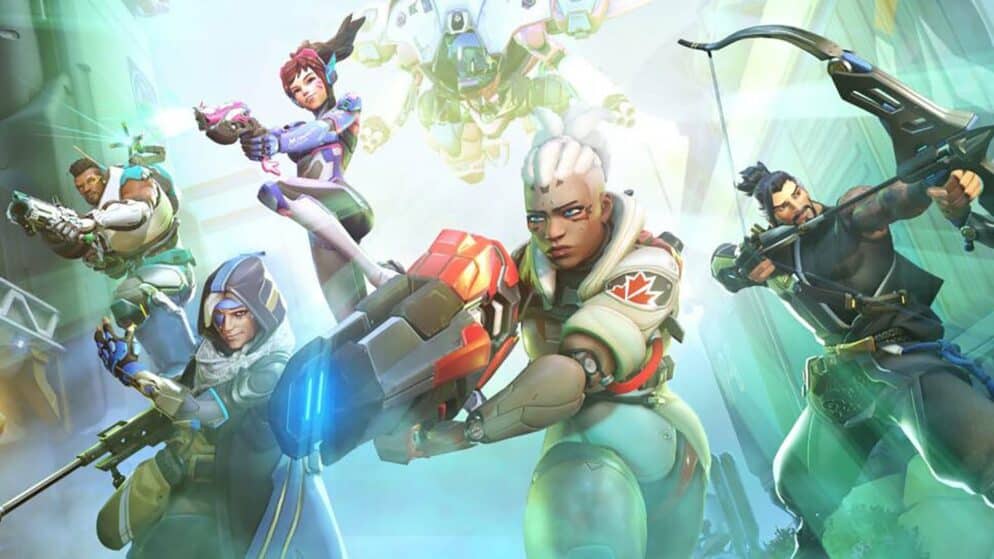

All Overwatch 2 Ranks Explained
Understanding the ranked system in Overwatch 2 is essential for players aiming to engage in the game's competitive scene. The system offers a structured framework where players can measure their skills and progress against others. It involves different ranks that categorize players based on their gameplay performance and success in matches, which provides a clear pathway for advancement and recognition within the game.
To embark on the competitive journey in Overwatch 2, players must familiarize themselves with the hierarchy of ranks and the mechanics that govern progression through them. These ranks not only signify a player's expertise and standing within the community but also dictate the level of competition they will face and the rewards they may earn. With a deeper comprehension of how ranking works, players can set realistic goals and devise strategies to climb the competitive ladder.
Overwatch 2 Ranks
In Overwatch 2's competitive scene, players are categorized into skill tiers, each comprising five divisions, with Division 1 being the highest within each tier. Gaining proficiency advances players through the divisions:
- Bronze: Entry-level tier
- Silver: Intermediate tier
- Gold: Proficient tier
- Platinum: Advanced tier
- Diamond: Expert tier
- Master: Elite tier
- Grandmaster: Near-peak tier
- Champion: Peak tier
Additionally, the exclusive Top 500 tier recognizes the foremost 500 players regionally. Player rankings are dynamic, responding to the outcome of each match played.
Overwatch 2 Competitive Tier List
The competitive ranks in Overwatch 2 are arranged as follows:
- Bronze
- Silver
- Gold
- Platinum
- Diamond
- Master
- Grandmaster
- Champion
- Top 500
These ranks reflect a player's mastery and standing in the game's competitive modes.
Understanding Overwatch 2's Competitive Ranks
Overwatch 2's competitive play is structured into a hierarchy of skill levels. Each player is assigned to a tier, reflecting their gameplay proficiency. The tiers are as follows:
- Bronze
- Silver
- Gold
- Platinum
- Diamond
- Master
- Grandmaster
- Champion
Players ranked from Bronze to Diamond have the flexibility to form teams with players who are within two tiers of their own rank. Master-tier players have a slightly stricter restriction, only able to team up with players one tier away. The elite Grandmaster and Champion tiers have the most leeway, permitting grouping within three divisions. This structure precedes the prestigious Top 500 rank, reserved for the highest-scoring players.
Explaining the Refreshed Competitive System in Overwatch 2's Ninth Season
- New Champion Tier: A tier called Champion is now positioned before the Top 500 and succeeding Grandmaster rank.
- Visibility on Progress: Post-match competitive clarity has been enhanced, displaying more precise progress metrics.
- Season 9 Changes: These alterations come as part of Season 9, focusing on improved player experience in the competitive ladder.
(Competitive progress insights available in-game following match completion.)
Overwatch 2's Competitive Play Modes
- Role Queue: Players select a preferred role before the match starts.
- Open Queue: Freedom to choose any hero during gameplay.
- Competitive Mystery Heroes: Occasionally available, offers random hero selection.
Players unlock these modes after achieving 50 Quick Play victories. Accessing them involves opening the game, navigating to the „Play“ section, and selecting „Competitive“ play.
Ranked Rewards
- Victories: Each nets players 10 Competitive Points.
- Draws: Yield 5 Competitive Points apiece.
- Defeats: Offer no Competitive Points.
Players accumulate these points to procure exclusive jade-themed weaponry, each necessitating 3,000 points to unlock.
















